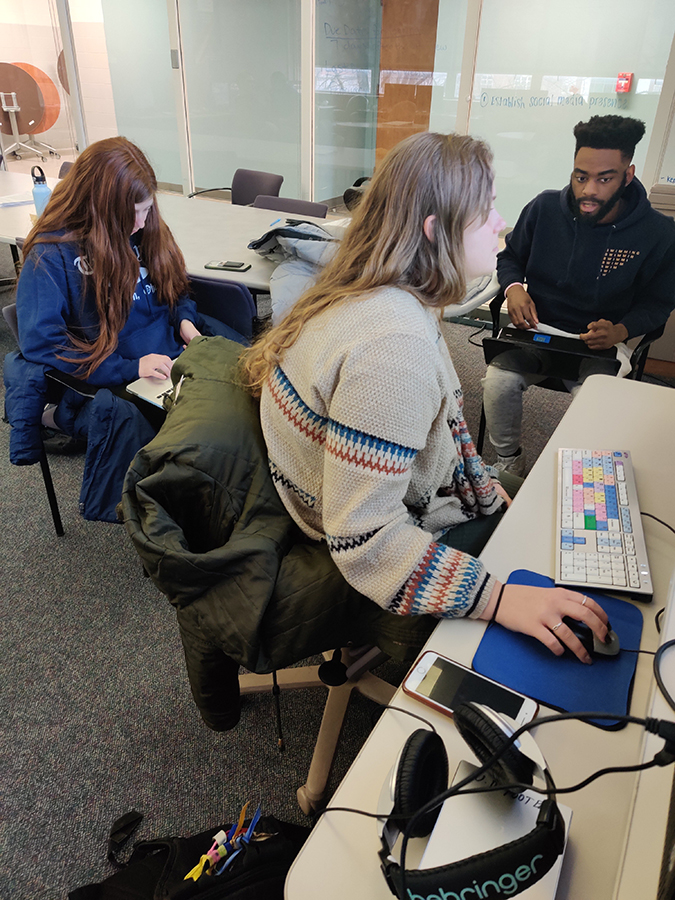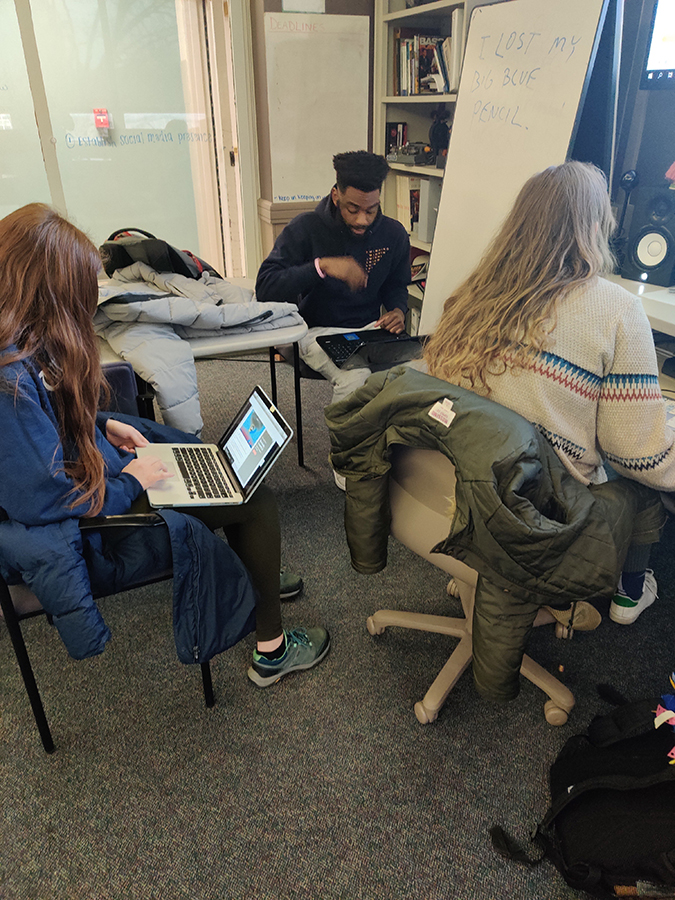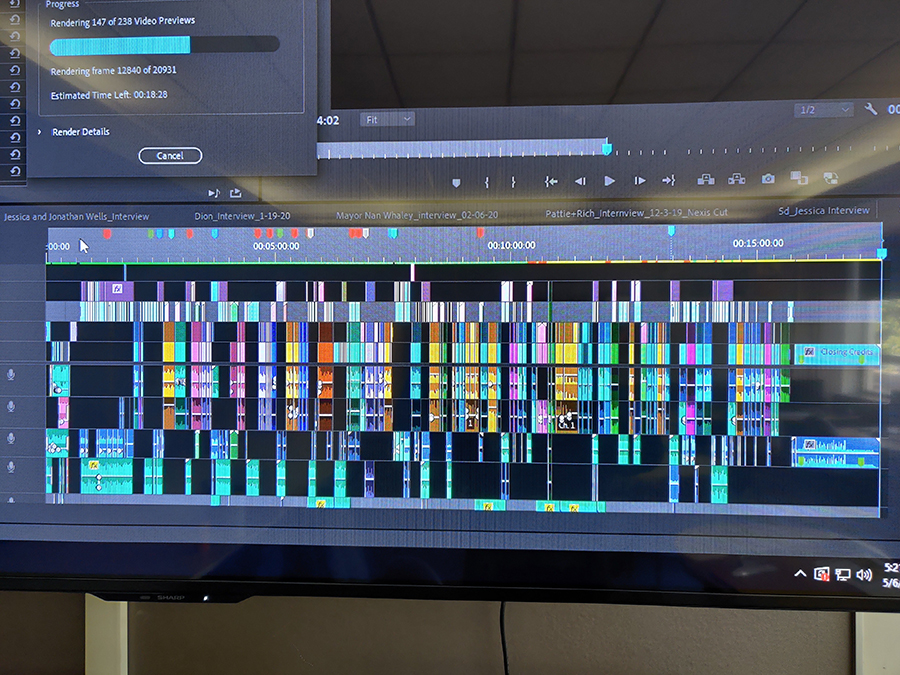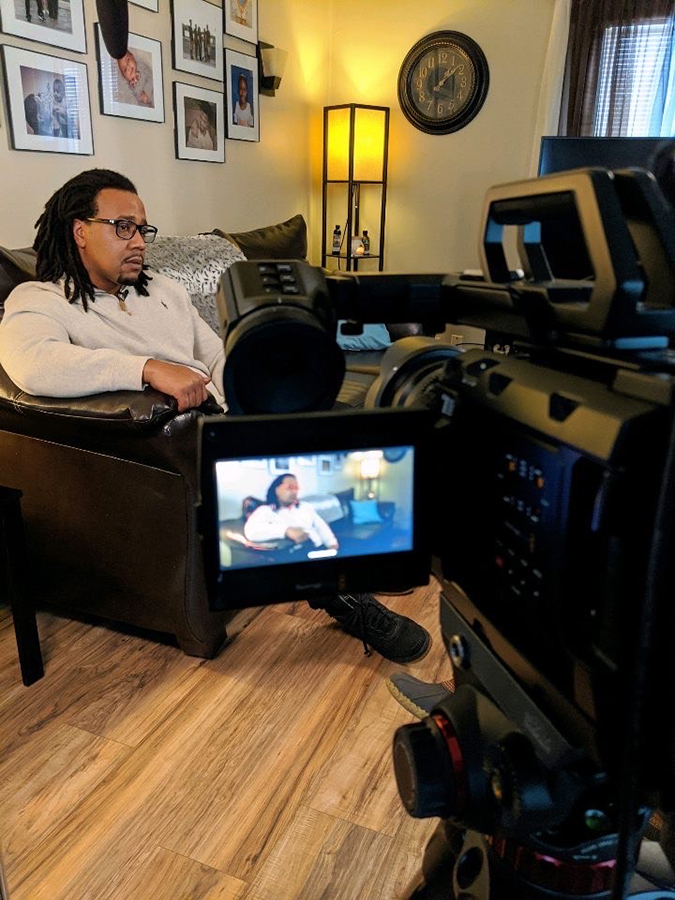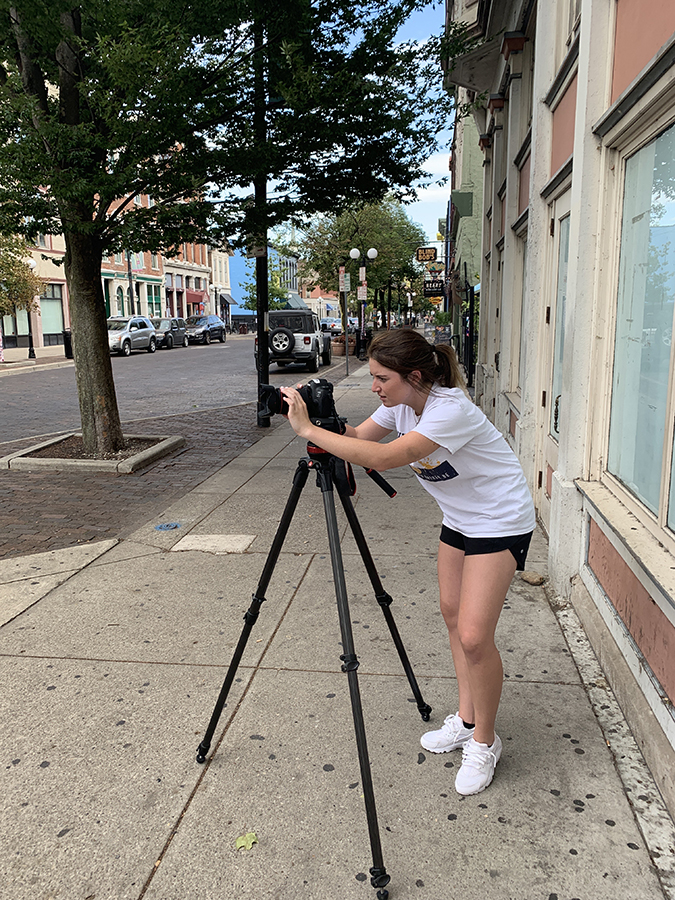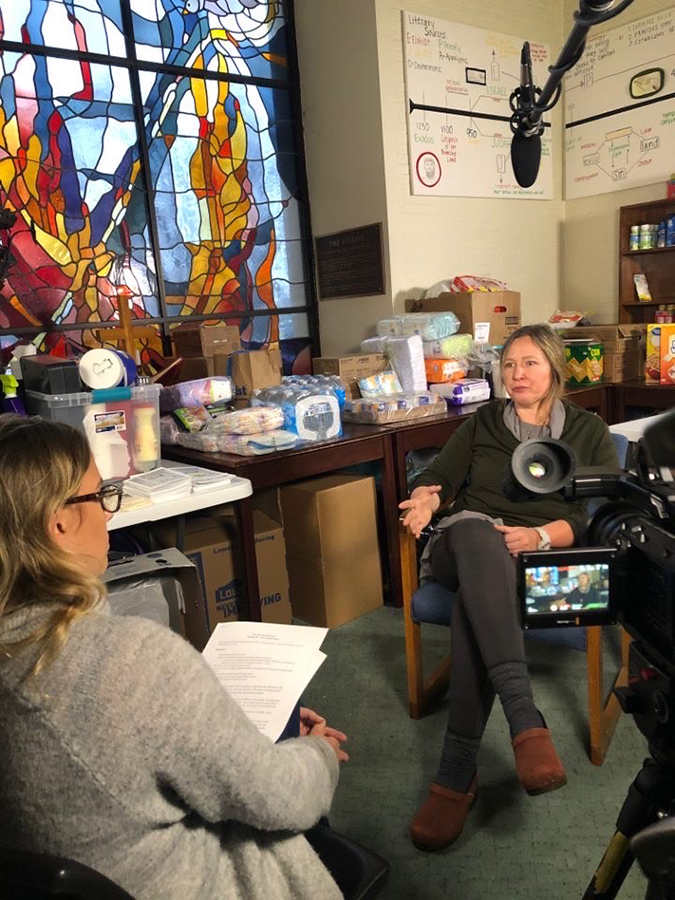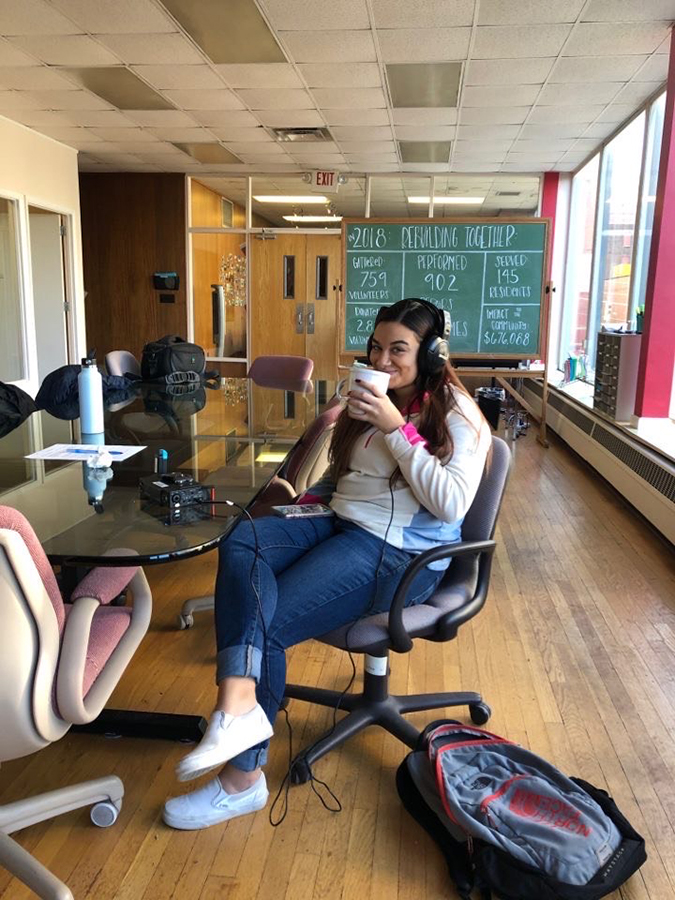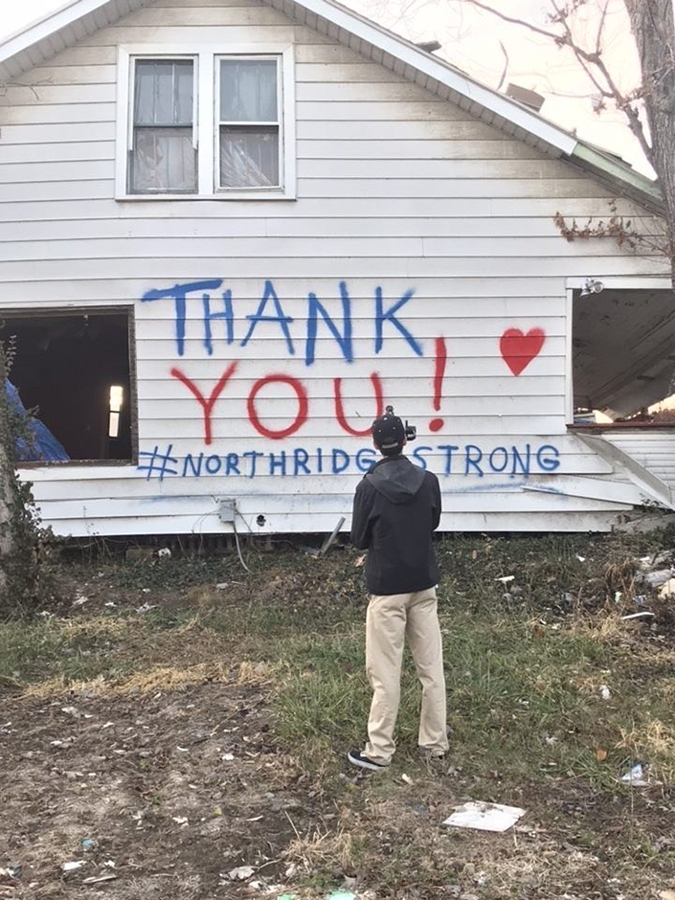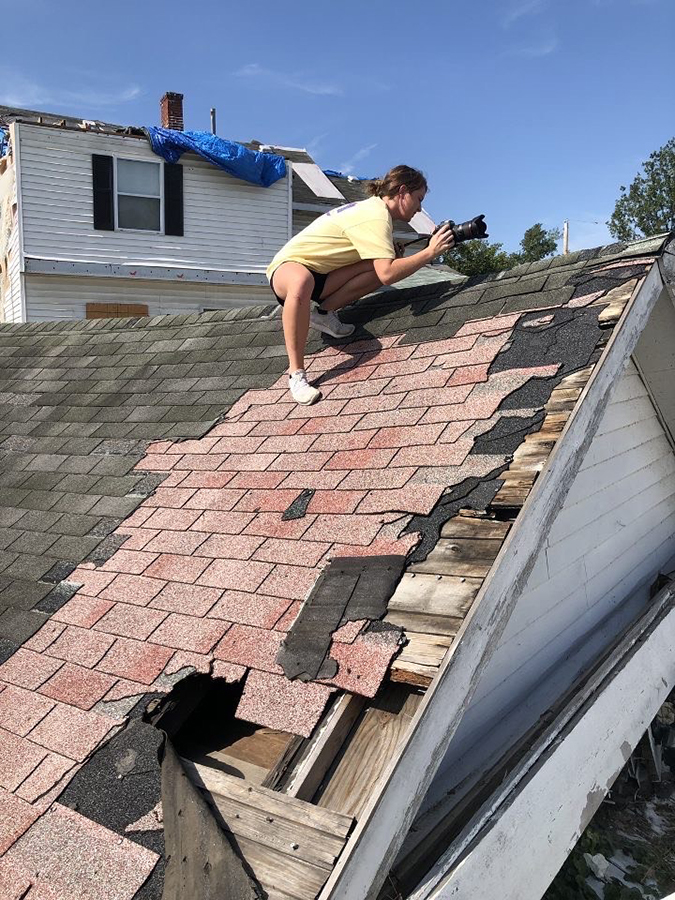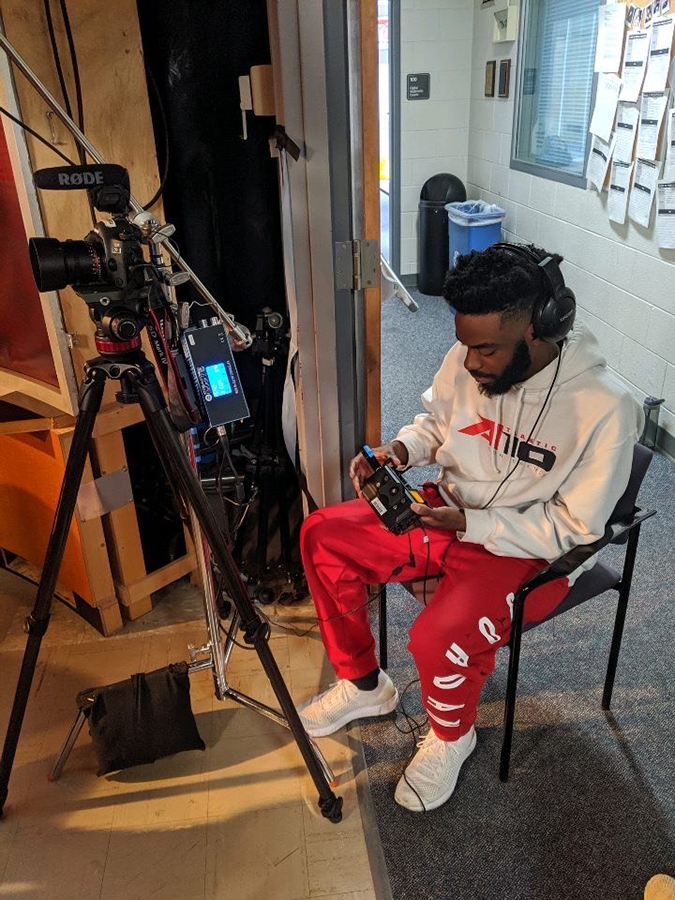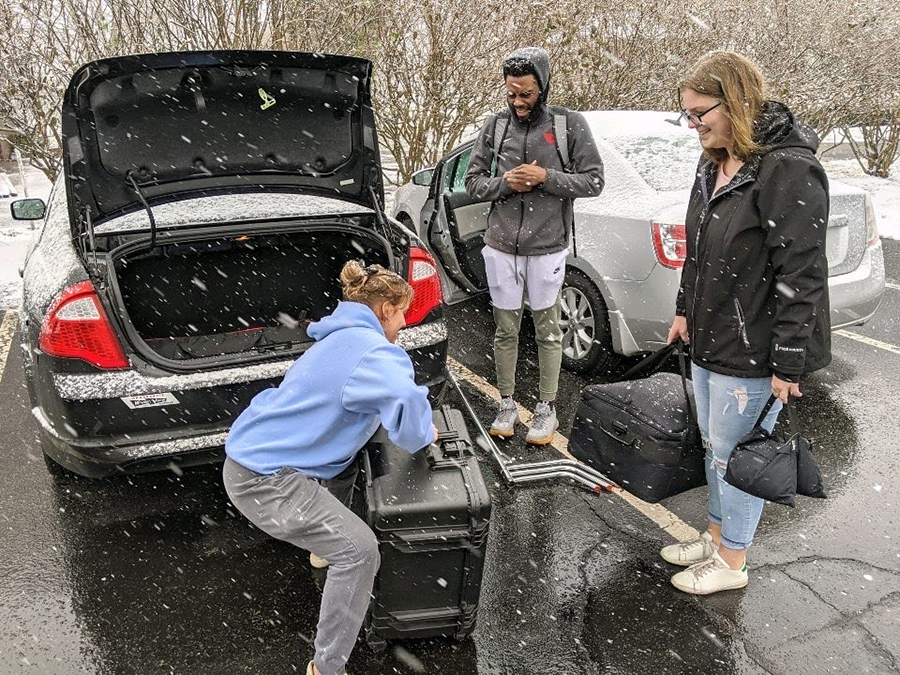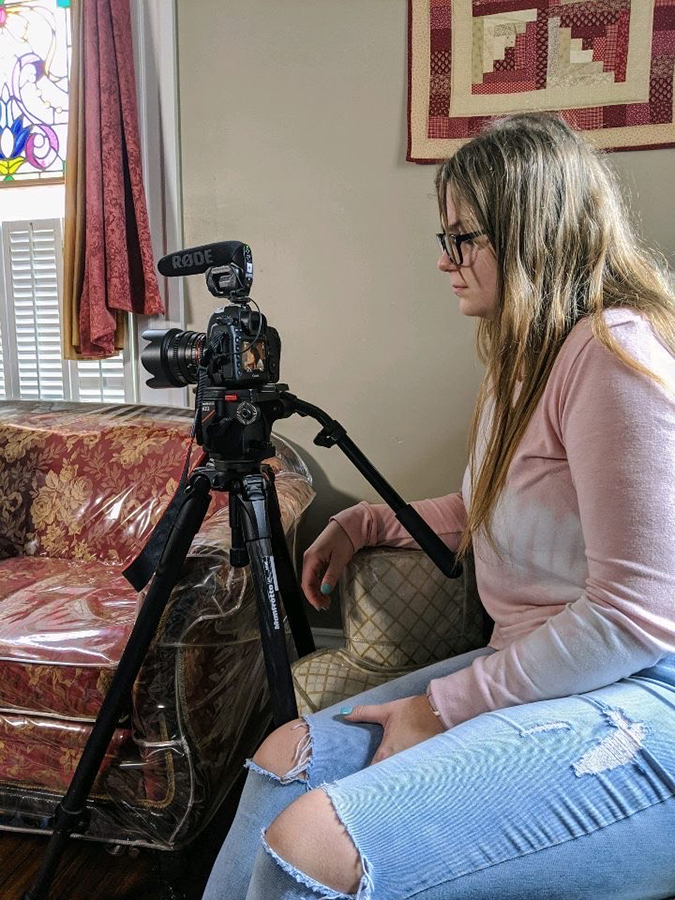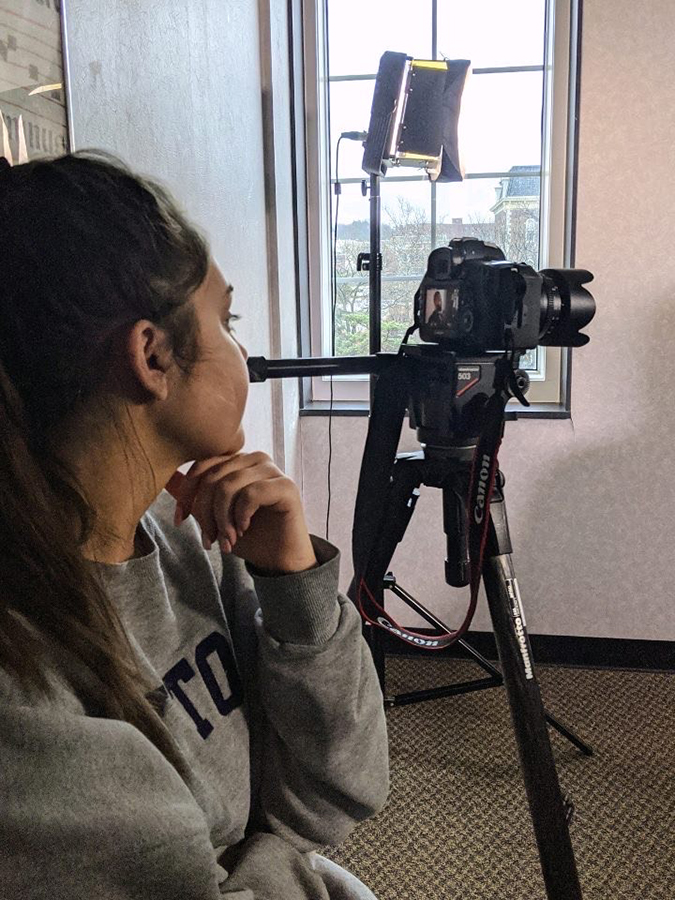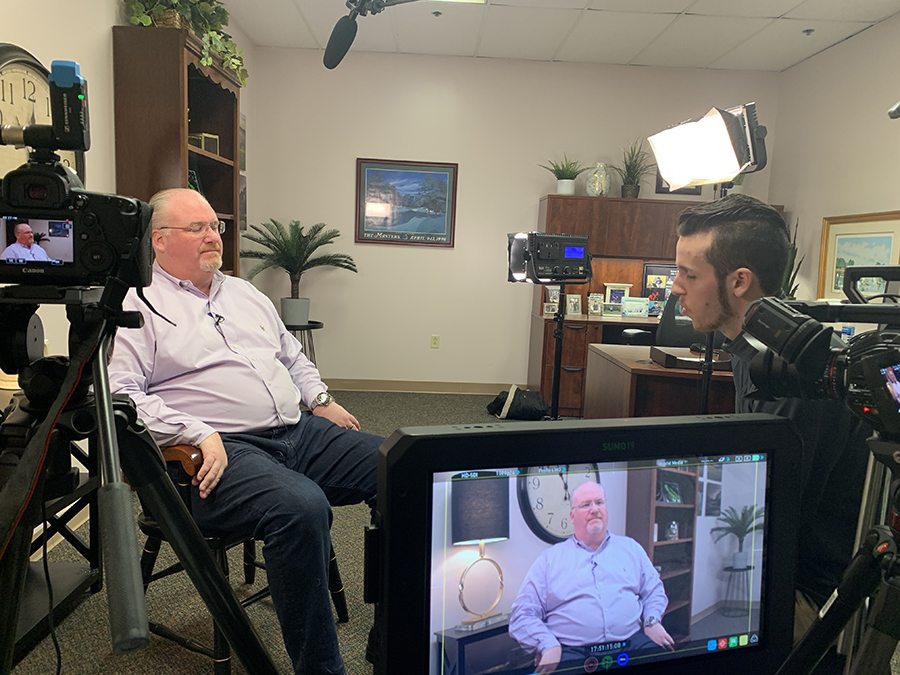College of Arts and Sciences Newsroom
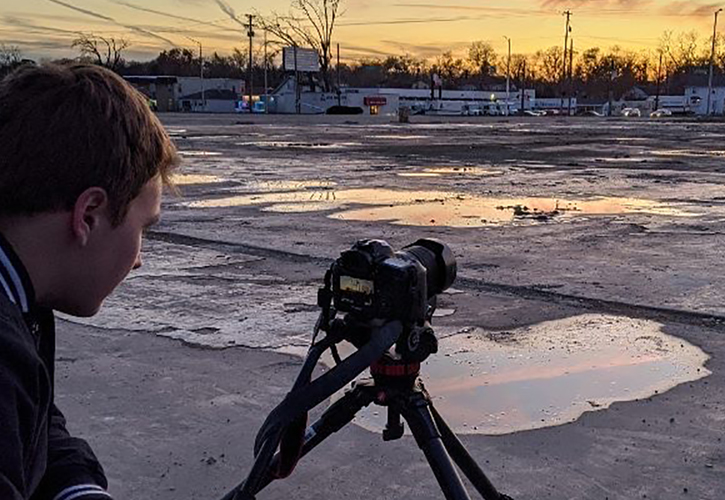
UD students work remotely to complete ‘Dayton’s Darkest Summer’
By Dave Larsen
Filmmaking is a collaborative process, but when the University of Dayton campus closed in mid-March because of the COVID-19 pandemic, nearly a dozen media production students needed to find a way to work together remotely from across the nation to complete their year-long documentary project.
Dayton’s Darkest Summer: The Rise from Tragedy is a 17-minute documentary about the tornado outbreak and mass shooting that devastated lives across the Dayton region during the summer of 2019. It premiered online in May, with screenings on three nights hosted by the Department of Communication via Zoom that attracted nearly 200 viewers. To date, the documentary has been viewed more than 9,100 times on the Flyer TV YouTube channel.
“Normally, we would have held a huge premiere event on campus to debut this year’s student documentary film and celebrate our students, but these times are anything but normal,” said Joe Valenzano, associate professor and Department of Communication chair, to a third-night audience of more than 150 faculty, staff and Dayton community members, including many of the film’s participants.
“At most schools where media production courses took place this spring, they were unable to have their students finish their films due to the disruption of having to go online because of COVID-19. Not here,” he added. “Thanks to the dedication of these students, the ingenuity of their faculty and staff, and the can-do attitude of the UDit staff, they finished this important film.”
Dayton’s Darkest Summer is the fifth documentary produced by media production students under the guidance of Greg Kennedy, media specialist in residence, and Roy Flynn, instructor of electronic media. Epicenter: Dayton’s Opioid Crisis won a 2018 student Emmy Award from the Ohio Valley Chapter of the National Academy of Television Arts & Sciences in the long-form nonfiction category. Student-produced documentaries earned honorable mentions in the same category in 2019, 2017 and 2016.
Work on this year’s documentary began in May 2019, when students met to discuss potential topics, so they could prepare for their first writing assignment in the fall. Later that month, multiple tornados hit the Dayton region on Memorial Day evening, killing a Celina, Ohio, man and causing an estimated $1 billion in damage. On Aug. 4, a 24-year-old gunman fatally shot nine people and wounded 17 others in Dayton’s Oregon District, a popular dining and entertainment area.
During the first class of the 2019 fall semester, Kennedy wrote “#DaytonStrong” on a whiteboard and led a discussion about community, resiliency and how outsiders view the city of Dayton because of depictions in the media.
“The students were set from the beginning to make sure that the audience would know the truth about Dayton — who Dayton really is to each citizen — and not the focus that was being presented by the media,” Kennedy said.
During that fall, students worked on the film’s development, pre-production and production stages. They vied for nine crew positions such as production manager, cinematographer, editor and sound engineer, to learn the skills related to each of those roles and also get a taste of the industry’s competitive nature.
Students researched and interviewed six Dayton-area residents before winter break. During the first months of the 2020 spring semester, they interviewed the remaining nine subjects and started the post-production stage. They completed a “rough cut” of the documentary, with interviews and other footage assembled into sequences, before the March 11 cessation of in-person classes.
With all the data and project files on a server in Kennedy Union’s media production classroom, Kennedy turned to Zoom — which allows remote screen-sharing — to work with students to complete their film.
“It then came down to just working out a Google spreadsheet where each day the students would sign up for a time slot to work with me remotely,” Kennedy said. “For the most part, I would give them access to the main computer and let them work, but I was there if they had questions or needed help with anything. I eventually created two Zoom accounts so I could start managing two students at a time. This allowed me to use the main computer for the editors and audio team to work, and then the other computers for the credits, cinematographers and visual effects team to work.”
During a post-screening question-and-answer session, May graduate and film editor Haley Celeste ’20 said the abrupt transition from collaborating on campus to working from home was difficult.
“When they posed that we were going do this remotely, I think a lot of us had a little bit of panic, a lot of questions and a lot of, ‘OK, well, maybe this won’t turn out as good as we initially thought,” said Celeste, a Wilmington, North Carolina, resident who received a bachelor’s degree in communication. “I’m pretty proud of the film. I think it tells the story really well. Going over to working remotely was just another obstacle that showed our resilience.”
Watch Dayton’s Darkest Summer: The Rise from Tragedy on YouTube.

